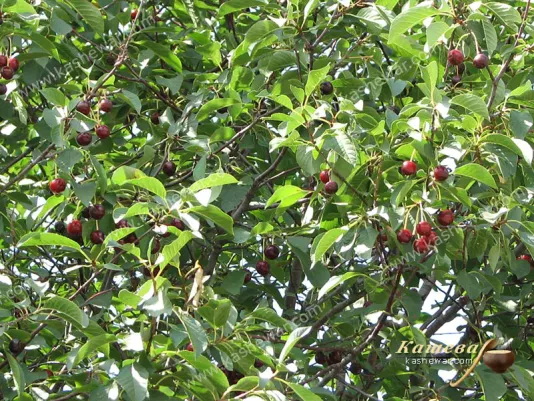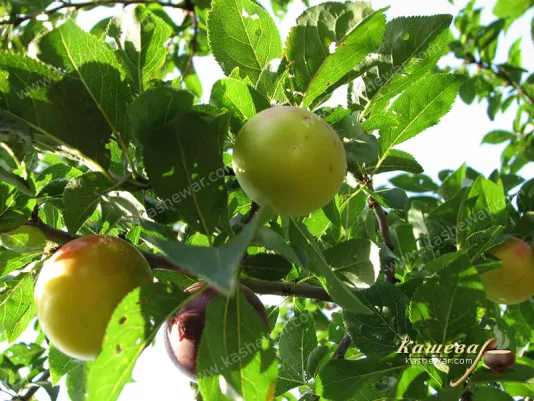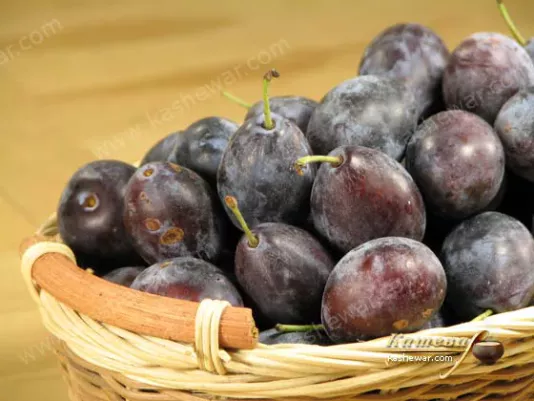Fruits with Pits
Fruits with pits for me are a category that offers incredible diversity of tastes and possibilities. In summer, I always enjoy fresh apricots or cherries, which can be eaten as they are or used for pies. In winter, preserves come to the rescue – dried cherries, apricot jam, or canned peaches that keep the summer spirit alive. I love cooking dishes where these fruits reveal themselves in new ways: I make compotes, use them in pastries, or even in meat sauces. For me, they symbolize the generosity of summer and the versatility of cooking because they are suitable for both sweet and savory recipes.
Different Types of Fruits with Pits
Apricots and Cherry Plums in Dishes
Apricots have always been a symbol of summer for me. I love them for their tender flesh, sweet taste, and light aroma that makes any dish special. I serve fresh apricots simply as a snack, but more often I use them in baking – they go perfectly with sponge cake, creating light pies and cakes. I consider apricot jam with slices a true delicacy: it keeps the fruit’s structure and becomes an ideal filling for pancakes or buns. Apricots are also great for making compotes and marmalade, where their aroma becomes even brighter. Cherry plum is more tart for me, but that trait makes it indispensable in the kitchen. I use it for meat sauces, especially for poultry or lamb. It adds a refreshing acidity and enhances the taste of the main dish. I make cherry plum juice or jam less often, but I always appreciate their rich taste. In pastries, cherry plum creates an interesting contrast with sweet dough, while in homemade sauces it adds spiciness. I always notice that apricots and cherry plums complement each other well in cooking: the sweetness of apricots and the tartness of cherry plum create the perfect balance. Using them in my recipes, I get dishes that bring both tenderness and freshness at the same time. These fruits help me diversify my menu and preserve summer feelings all year round.
Cherries in Different Forms
Cherries have always been a universal fruit for me since they are suitable for both sweet and more neutral dishes. I love eating fresh cherries just as they are, enjoying their bright tartness. In baking, they become the main highlight: cherry pies, strudels, or muffins always come out with a unique aroma and taste. Cherries pair wonderfully with chocolate, and I often add them to cakes or desserts to emphasize the richness of flavors.
Cocktail cherries opened new possibilities for me. They not only decorate drinks but also add a festive mood. I use them for cakes, ice cream, or as an original detail in desserts. Dried cherries became a practical ingredient for me: I add them to porridge, homemade bars, or salads. They give a rich taste and make even the simplest dishes more interesting. I noticed that cherries are a fruit that always keeps its character regardless of the form. Fresh, dried, or canned, they add bright tartness to dishes, which refreshes and balances sweetness. For me, cherries are an indispensable ingredient that I use all year round: fresh in summer, as jam, jelly, or dried berries in winter. That’s why they never disappear from my kitchen.
Peaches and Plums in Cooking
Peaches have always been associated with tenderness and sunny summer for me. The juicy flesh of these fruits is perfect for fresh consumption, but I especially love using them in desserts. Peach pies, cheesecakes, or jellies always turn out light and aromatic. Canned peaches save me in winter: they retain their natural flavor and become the perfect filling for pastries or decoration for cakes. I also use them in salads, where the sweetness of peaches goes perfectly with salty cheese or nuts. Plums are more versatile for me since they are suitable for both sweet and savory dishes. I love making plum sauces for meat, especially for duck or pork, because their light acidity creates a harmonious balance. In pastries, plums become a bright accent – pies or strudels with them always come out aromatic and juicy. I also make plum jam and compotes that preserve the taste of summer for winter. I noticed that peaches and plums complement each other in cooking: the sweet tenderness of peaches and the expressive tartness of plums allow for various combinations. For me, they are the true foundation of a summer menu and at the same time universal fruits for preserves. In any form, these fruits bring a rich taste and add harmony to the dishes I prepare for my family.
Olives and Their Role in the Kitchen
Olives are a special fruit with a pit for me that open a new dimension in cooking. I use them not for sweet but for savory and spicy dishes. Green olives have a fresher, more herbal taste, and I often add them to salads, pizzas, or appetizers. Black olives are softer and richer for me; they pair perfectly with cheese, meat products, and tomatoes. I love that they can be both a standalone snack and an important part of a complex dish. I also use olives to make sauces and spreads. For example, tapenade made from chopped olives, garlic, and olive oil is a quick way to make any lunch refined. In hot dishes, olives add depth: I love putting them in stewed chicken with vegetables or in fish dishes, where they create a special Mediterranean accent. For me, olives are not just a fruit with a pit but a universal ingredient that suits both everyday menus and festive tables. They are beneficial thanks to their high content of healthy fats and give dishes a characteristic taste. I always keep a jar of olives in the fridge because I know they will come in handy in the most different cases – from quick snacks to complex main dishes.
Storage and Practical Use of Fruits with Pits
I always try to store fruits with pits properly so they stay fresh and tasty longer. I keep fresh apricots, peaches, or plums in a cool place but not in the fridge until they are fully ripe since they lose their aroma there. Once ripe, I put the fruits in the fridge and use them within a few days. For preserves, I choose only whole, undamaged fruits – then jams or compotes turn out more aromatic and keep longer. I keep dried cherries or plums in tightly closed containers in a dark place so they don’t lose their flavor or spoil. In use, I rely on my own experience and habits. Compotes made from fresh or dried fruits are always a reminder of childhood for me, while I often spread jam between cake layers or serve it with pancakes. I love adding peaches and apricots to desserts, while plums or cherry plums go into meat sauces. Olives take a separate place in my kitchen: they are convenient for quick snacks and add a Mediterranean accent to hot dishes. My experience shows that fruits with pits are versatile: they can be both the basis for sweets and an ingredient for savory recipes. I always use them differently depending on the season: fresh in summer, in the form of jams, dried fruits, or canned ones in winter. This versatility is what makes them so valuable in everyday cooking.






